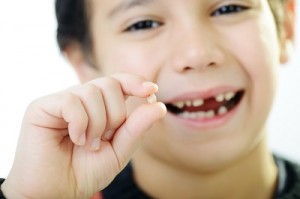By Dr. Patrick McElgunn, Piedmont Plastic Surgery & Dermatology
 Thinking about protection from the sun’s harmful rays should be a part of everyone’s daily routine, regardless of your skin type, age or family history of cancer. Raising children to be “sun smart” starts at home. If children see you limiting your time in the sun, wearing sun-protective clothing and using sunscreen, they will be more likely to then model that behavior, with sun safety becoming a way of life that has lasting positive impact.
Thinking about protection from the sun’s harmful rays should be a part of everyone’s daily routine, regardless of your skin type, age or family history of cancer. Raising children to be “sun smart” starts at home. If children see you limiting your time in the sun, wearing sun-protective clothing and using sunscreen, they will be more likely to then model that behavior, with sun safety becoming a way of life that has lasting positive impact.
Plan around the sun:
- Schedule weekend activities and practices to avoid peak sun intensity between the hours of 10 a.m. and 2 p.m., when the sun’s rays are the strongest and can be the most damaging to the skin.
- Educate your children about the UV Index reading. EPA issues a UV Alert when the level of solar UV radiation reaching your local area is predicted to be unusually intense for the time of year. The UV Alert is a warning, posted by ZIP code, city and state at www.epa.gov/sunwise/uvindex, and offers simple steps that you can take to protect yourself and your family.
- Use extra caution near water, snow and sand because they reflect and intensify the damaging rays of the sun.
Wear sun-protective clothing:
- Look for UV-protective clothing for your children to wear while playing sports or when they are outside. Another option is to have your child wear lightweight long-sleeved shirts or pants and a wide brim hat to shade the face, neck and cover the ears.
- Buy inexpensive sunglasses with UV protection for your child to wear, or have an ultraviolet coating added to the lenses of prescription glasses or contact lenses.
Apply sunscreen properly:
- Generously apply a broad-spectrum, water-resistant sunscreen with a Sun Protection Factor (SPF) of 30 or more to all exposed skin.
- Apply sunscreen approximately 20 minutes before going outside so that it has time to take effect before you go out in the sun. It is easier to apply sunscreen before getting dressed to avoid missing any areas.
- Reapply approximately every two hours, even on cloudy days, and after swimming or sweating.
- The sunscreens that spray directly onto the skin must be rubbed in after spraying. Be careful when applying spray sunscreens outside because much of it may blow away.
Be “sun safe” at school:
- Talk to your child’s teacher or coach about how they incorporate “sun safe” behaviors. Does your child need a note sent with them to apply sunscreen? Find out what you need to do to make sure that your child is protected at school.
- Work to create shaded areas at school for kids playing outside (shade trees, shade structures, temporary shade structures for dugouts and sidelines). Encourage your PTO/PTA to start raising funds if the money isn’t in the budget, or see if your organization would qualify for a shade structure grant from the American Academy of Dermatology.
Let’s say that you encourage these positive behaviors, but still get pushback from your children about sun protection. Explain to them that what they do – and don’t do – NOW will have an impact on them later in life. Sun exposure has a snowball effect, meaning that year after year of suntans and sunburns will cause wrinkles and an increased chance of skin cancer.
So go and grab your kids to have some fun outside, knowing that you’re teaching them how to best protect their skin, and their overall health, in the long run.
Patrick McElgunn, MD, FRCPC, MBA, is a board-certified dermatologist at Piedmont Plastic Surgery & Dermatology‘s Charlotte/Blakeney office. Dr. McElgunn’s area of expertise is general medical and cosmetic dermatology, and he sees patients of all ages. With seven offices in the region, Piedmont Plastic Surgery & Dermatology specializes in dermatology, plastic surgery and Mohs surgery.
This blog was produced in partnership with Charlotte Parent. Click here for the original post and other parenting resources.
By Vandana K. Patel, M.D., and Jennifer L. Caicedo, M.D., Asthma & Allergy Specialists
 As allergists, we often get the question, “Why are so many kids allergic to peanuts?” This isn’t an incorrect observation, as the number of children in the United States with peanut allergy has tripled in the past 10 years, while doubling in most other Western countries. The rate of increase was so alarming that Professor Gideon Lack and his team at King’s College in London wanted to see if early introduction of peanuts would offer protection from developing peanut allergies.
As allergists, we often get the question, “Why are so many kids allergic to peanuts?” This isn’t an incorrect observation, as the number of children in the United States with peanut allergy has tripled in the past 10 years, while doubling in most other Western countries. The rate of increase was so alarming that Professor Gideon Lack and his team at King’s College in London wanted to see if early introduction of peanuts would offer protection from developing peanut allergies.
The study titled “Learning Early About Peanut Allergy”(LEAP) randomly assigned 640 infants between the ages of 4 and 11 months with severe eczema, egg allergy, or both, to either avoid or consume peanuts until 5 years of age. Remarkably, the overall prevalence of peanut allergy in the avoidance group was 17 percent compared to only 3 percent in the consumption group. Earlier introduction of peanuts to infants in the study decreased their risk of developing peanut allergy by a staggering 70 percent to 80 percent.
Lack and his research team concluded that there is a narrow window of opportunity to prevent peanut allergy and we must now feed our very young children peanuts. The study recommends that peanuts (in a safe/non-choking hazard form) can be introduced to infants as early as 4 months of age, but how would we in the U.S. use these learnings to help our patients?
In order to make the results from the LEAP study practical, the National Institutes of Health has released a guideline to help prevent peanut allergy in the U.S. This guideline, which speaks to BOTH the primary care provider and the pediatric allergist, is divided into three parts, depending on varying levels of risk:
- The first part of the guideline addresses the HIGH RISK infants who are the ones with severe eczema, egg allergy, or both. These patients should get foods containing peanuts in their diet by 4-6 months of age, but only after either skin or blood testing. The health care provider may then give guidance regarding the introduction. A referral to an allergy specialist may also be recommended.
- The second part of the guideline addresses the MODERATE RISK infants with mild to moderate eczema who should also have peanuts in their diet by 4-6 months of age.
- The third part of the guideline states that children without eczema or any other food allergy can have peanuts freely introduced into their diet. Peanuts should be introduced into an infant’s diet after other solid foods have been started.
The medical community is not yet sure if the results from LEAP can be extrapolated to the introduction of other highly allergenic foods, but we anticipate that such studies (especially with regard to tree nuts and sesame) are forthcoming. Parents and caregivers are encouraged to discuss this with their primary care provider at their infant’s 4- to 6-month well visits.
Dr. Vandana Patel is a board-certified allergist at Asthma & Allergy Specialists/Food Allergy Institute of Charlotte. She loves taking care of children and adults with asthma and allergic disease.
Dr. Jennifer Caicedo is a board-certified pediatrician and board-certified allergist at Asthma & Allergy Specialists/Food Allergy Institute of Charlotte. Her clinical interests include food allergy and allergic and non-allergic skin diseases in children and adults.
This blog was produced in partnership with Charlotte Parent. Click here for the original post and other parenting resources.
Understanding the Patterns of Anxiety
By Andrea Umbach, Psy.D., Southeast Psych
 We all have fears, worry and anxiety. But one out of eight children is considered to have a diagnosable anxiety disorder. As a parent, it is sometimes difficult to distinguish between typical worry and more serious symptoms. You might wonder … is this temporary, will it pass, or should we seek help? The better you understand the way anxiety works, the more knowledge you will have to base your decisions.
We all have fears, worry and anxiety. But one out of eight children is considered to have a diagnosable anxiety disorder. As a parent, it is sometimes difficult to distinguish between typical worry and more serious symptoms. You might wonder … is this temporary, will it pass, or should we seek help? The better you understand the way anxiety works, the more knowledge you will have to base your decisions.
First, fear is an adaptive emotion that we all rely on to keep us safe. It also motivates us to work hard and get things done. However, we do need to consider when fear starts to interfere with our daily lives. For example, Sarah’s fear of getting into trouble might keep her from talking out of turn during class. However, Melissa’s fear of getting into trouble is keeping her from wanting to go to school at all. As you can see, the content of the fear is not as important as how the fear impacts our lives. While Sarah’s fear seems adaptive, Melissa’s fear has escalated to the point that she is significantly distressed on a daily basis and will also suffer from unintended consequences like missing out on academics and socializing at school. When fears become irrational, persistent and intrusive, it is likely that we are moving into anxiety territory.
Second, anxiety is maintained by a vicious cycle. Many people reflect … how did it get to this point? Well, it starts small and then it grows. Let’s use a fear of vomiting, for example. When Kelly was eight years old, she had a stomach bug. She threw up about five times spanning a 12- hour period. Now, at age 12, she remembers how awful she felt when she threw up and has been doing everything in her power to make sure that never happens again. This is very understandable; no one wants to be sick. The problem is that Kelly has created many associations related to her vomiting. She views vomiting as horrible, threatening, and even dangerous. She also follows strict rules related to washing her hands, avoids certain foods, and will not touch things others have touched with her bare hands. Vomiting has become increasingly more and more powerful in her mind. And because she hasn’t thrown up since she was eight, she really doesn’t know any differently.
Anxiety patterns are easier to see once you know the signs. There is some kind of triggering situation, such as having to get a shot or give a speech. Then there are many intrusive, worrisome thoughts connected to the situation … I can’t handle the pain. What if I mess up and everyone laughs at me? At the same time, we start to experience emotional and physical discomfort, possibly a racing heart or panic feeling. Then, we instinctively want to do something to decrease this uncomfortable feeling. We often end up using safety behaviors such as avoidance, escape, asking for reassurance, checking, or rigid rules. These behaviors are well-intentioned and often work in the short-term. For example, if I avoid getting a shot, I will definitely feel better. But, I ultimately will still be afraid of shots.
The good news is that anxiety disorders are highly treatable. The most effective treatment for anxiety is called cognitive-behavioral therapy. This type of therapy focuses on really understanding cognitive and behavioral patterns in order to create meaningful changes. Basically, we have to get out of the anxiety cycle and move more toward living life fully. Even though facing a fear is challenging, it is also very rewarding.
So consider how your child’s fear is impacting his or her life. How often are they afraid? How disruptive is the fear? How much are they suffering? How much is the rest of the household suffering? If you feel like fear is controlling your child, it might be time to find some help. A cognitive-behavioral therapist would be happy to guide your child through this journey, as well as support you in parenting a child who is struggling with anxiety.
Dr. Andrea Umbach is a licensed psychologist at Southeast Psych. She specializes in treating individuals with anxiety, OCD, phobias, panic, hoarding, and trichotillomania, using a cognitive-behavioral approach. Dr. Umbach is the author of “Conquer Your Fears and Phobias for Teens” and founder of the Charlotte Anxiety Consortium.
This blog was produced in partnership with Charlotte Parent. Click here for the original post and other parenting resources.
Homework Help with ADHD in Mind
By Terri M. James, Ph.D., Southeast Psych
 Homework time – groan, sigh, roll eyes – and that’s just the parents! Getting any child through homework time can be a challenge, but with an ADHD child, that challenge is often amplified.
Homework time – groan, sigh, roll eyes – and that’s just the parents! Getting any child through homework time can be a challenge, but with an ADHD child, that challenge is often amplified.
Expecting a child with focus/attention/hyperactivity issues to sit still, complete assignments and not be distracted may seem like an insurmountable task to parents. In many cases it is partly because we expect these children after a long day at school to do exactly what is most difficult for them: sit still!
It is time to break the negative cycle that homework time has become in your household. The Purposeful Parenting™ way is to not react, but to plan, prepare and be positive.
Self-care. You can’t help your child if you haven’t taken care of yourself first. Every safety video on an airplane tells parents to put on their own oxygen mask first, and then help their child. If you go into homework time tense/distracted/short-tempered, it’s a pretty safe bet that it won’t go smoothly.
Kid-care. Children with ADHD are particularly challenged by the focus demands of a long school day. Most children need some downtime when they get home, before they can turn to homework. This is a great time for physical activity, not for electronics.
Organization. Make a list with your child of all the assignments that need to be completed, including what is due tomorrow, as well as later in the week. Then make a list of what will be accomplished that evening and in what order.
Establish a place for homework. Kitchen tables are often reminiscent of Grand Central Station, and bedrooms can have way too many interesting distractions. The ideal place for homework is clean, void of distractions, and close enough that parents can see but not hover. Many parents find that setting up a folding table in the dining room can be ideal, and having all necessary supplies handy can reduce the interruptions, like getting up to get a pencil and then playing with the dog.
Set a timer. Parents of ADHD children often complain that what should take their child 20 minutes ends up taking two hours. Partly, this is because the child is not capable of sustaining focused attention for prolonged periods of time. Something that can help is to work for 10-15 minutes (up to 20 minutes for older children) and then break for five-10 minutes. Set a timer for work and break time. While this may seem counterintuitive, as it seems to prolong the total amount of time, breaks help “reset” the brain and increase focus, thus making work time more productive.
De-escalate frustration, don’t escalate. If your child is having a bad day, the work is too hard, or the family schedule just isn’t working to allow the routine that day, don’t let the situation get out of hand. It’s so much easier to put the brakes on a runaway train than to try and put it back on the tracks after it derails. If you sense that the train is getting away from your child, and from you, stop! Take an unscheduled break. Go outside, get some physical activity, maybe a snack. Start back fresh and renewed.
Know your own child. If sitting still just isn’t possible, give them a ball of play-dough to squeeze while they study. Maybe they can learn their math facts faster if they need to answer them before the baseball is thrown. How about spelling words between basketball shots or hula-hoop attempts? Imagine if homework time wasn’t torture, but actually a bit of fun? Of course, that can’t work with all types of assignments, but breaking up the ones that require sitting still versus ones that can be accomplished while being active can help with focus and engagement.
Terri James has a Ph.D. in Clinical/School Psychology and specializes in assessments and parenting at Southeast Psych in Charlotte, North Carolina. The Purposeful Parenting™ program at Southeast Psych provides practical skills through parent education, training, and support to promote family flourishing. www.SoutheastPsych.com.
This blog was produced in partnership with Charlotte Parent. Click here for the original post and other parenting resources.
By Dr. John R. Allbert, Maternal Fetal Medicine Associates
 Do you want to start a family but you’re considered “high risk?” Or have you just learned that you’re expecting triplets and your pregnancy needs to be closely monitored? You may be referred to see a maternal-fetal medicine (MFM) specialist. What does this mean?
Do you want to start a family but you’re considered “high risk?” Or have you just learned that you’re expecting triplets and your pregnancy needs to be closely monitored? You may be referred to see a maternal-fetal medicine (MFM) specialist. What does this mean?
Maternal-fetal medicine as a subspecialty began in the 1960’s with the introduction of technological advances like ultrasound and fetoscopy, which allows a view into the womb. Additional fetal therapies soon followed that dramatically improved the health of infants at delivery.
Maternal-fetal medicine specialists undergo two to three additional years of specialized training after completing their four-year residency in obstetrics and gynecology. Since the body reacts and adapts differently to diseases in pregnancy, maternal-fetal medicine physicians are specifically trained in the management of the “unroutine” pregnancy. The goal of maternal-fetal medicine is to prevent unfortunate outcomes by helping to maximize the health of mother and baby.
Today, women are referred to maternal-fetal specialists for three primary reasons:
- To optimize their health before pregnancy
- To treat medical conditions and pregnancy complications that occur during the pregnancy
- To evaluate and treat fetuses who are at higher risk of being born in critical condition or not surviving in late pregnancy
The best time to prevent a high-risk pregnancy is before ever becoming pregnant and in the first 14 weeks of pregnancy. Maternal-fetal medicine physicians are specially trained to prevent birth defects and developmental delays by identifying and treating at-risk women with special diets, medications or supplements, like folic acid.
When to see a maternal-fetal specialist
Women who see maternal-fetal medicine specialists before pregnancy are primarily women with chronic illnesses such as diabetes, kidney disease and severe high blood pressure, or have a history of pregnancy complications, like pre-term or still-birth delivery. When pregnant women are identified as high risk, either before or early in pregnancy, there are interventions to reduce their risk of delivering preterm by 30-45 percent. Women may also turn to a maternal-fetal specialist for help and guidance if there is a family history of genetic diseases that may affect their future children. Otherwise healthy patients who may develop complications during the pregnancy, such as pregnancy-induced high blood pressure and diabetes, may also see a maternal-fetal specialist.
Women in multiple gestation pregnancies, such as twins and triplets, are almost always referred to MFM practices. Over the past forty years, there have been incredible advancements in treating fetuses before delivery, which prevents death or severe disability. With MFM, blood can be transfused into a severely anemic fetus, fetal heart failure can be treated and some fetal anomalies can be repaired before birth, such as spina bifida, obstructed bladders and some heart defects.
Dr. John Allbert has practiced maternal-fetal medicine in Charlotte for more than 25 years. He is past president of the North Carolina Obstetrical and Gynecologic Society and is currently the American College of Obstetrics and Gynecology Section chair for North Carolina. Learn more about Novant Health Maternal-Fetal Medicine.
This blog was produced in partnership with Charlotte Parent. Click here for the original post and other parenting resources.
The Challenge of Early Onset (Precocious) Puberty
 For most parents, few things give as much joy and satisfaction as seeing their children reach developmental milestones. Yet, as they get older, the milestones can become more bittersweet as they pass from the innocence of childhood to young adulthood. Of those, few are more dreaded by parents than their daughters or sons starting puberty. The idea of their sweet, innocent little girls and boys turning into moody, hormonal, snapchatting, car-driving teenagers is outright scary and causes many moms and dads to lose sleep.
For most parents, few things give as much joy and satisfaction as seeing their children reach developmental milestones. Yet, as they get older, the milestones can become more bittersweet as they pass from the innocence of childhood to young adulthood. Of those, few are more dreaded by parents than their daughters or sons starting puberty. The idea of their sweet, innocent little girls and boys turning into moody, hormonal, snapchatting, car-driving teenagers is outright scary and causes many moms and dads to lose sleep.
What if your daughter or son, only in kindergarten or first grade, began showing signs of entering puberty? It’s not far-fetched and perhaps more common than you might think. This phenomenon of very early puberty, called precocious puberty, has become a reality for many American families and continues to increase. A study conducted by the American Academy of Pediatrics followed girls from various ethnic backgrounds and locations and found that by seven years of age, more than 10 percent of Caucasian girls, 23 percent of African-American girls and 15 percent of Latina girls showed signs of breast development, indicating the start of puberty. Breast development in 7- to 8-year-old girls is twice as common as it was in the late 1990s.
From a medical standpoint, precocious puberty is defined as the onset of secondary sexual development before the age of 8 in girls and 9 in boys. Due to recent shifts toward earlier onset of puberty in general, some doctors do not call it precocious puberty unless breast development starts before age 7, as the definition of “normal” may be changing. In most populations, the average age that puberty begins is about 11, although slightly earlier in girls (10 1/2) and later in boys (11 1/2).
How do you know?
Figuring out whether your daughter or son is really starting puberty is not as straightforward as it may seem. In girls, the usual order of changes as they enter puberty is breast development, pubic hair, underarm hair, followed by their first period.
In boys, the order is larger genitals, pubic hair, facial hair and then a deeper voice. However, the order can change and growth spurts may occur anytime throughout the process.
Emotionally, early puberty can lead to several difficulties, including low self-esteem, unnecessary risk-taking and bullying. A child who enters early puberty is also at greater risk of sexual contact or attention before he or she is mentally ready or prepared to handle it.
In addition to the psychosocial and emotional impacts, one of the biggest concerns with precocious puberty is its effects on long-term growth and eventual adult height. Most of a person’s adult height occurs during the growth spurts and precocious puberty can interfere with the growth plates in developing bones, causing growth to stop early.
What can you do?
Children with signs of early puberty should be evaluated by their pediatrician or primary care physician to rule out any underlying problems. In a very small number, the cause can be identified as a cyst or tumor of the ovary, testes or brain, which can affect the secretion of sex hormones.
Precocious puberty affects girls more than boys (87 percent versus 13 percent). In the vast majority of children, the cause of precocious puberty is not known and the most common type, central precocious puberty (CPP), has no identifiable cause in 80 to 90 percent of girls and up to 60 percent of boys.
In children where early puberty poses serious physical, such as a growth disturbance or emotional problems, there are several medical treatments to delay the process until the child is older. Medications can be given to halt puberty by turning off the system in the brain responsible for signaling the hormone production that results in the transition to adulthood. As you might expect, parents who opt for puberty-suppressing treatment in their children may have a harder time deciding when to end treatment than knowing when to start it. Fortunately, research shows no long-term negative effects from this treatment.
Precocious puberty can be a stressful issue for parents and their children, but medical help and emotional support are available. If you have any concerns, reach out to your doctor.
This blog was produced in partnership with Charlotte Parent. Click here for the original post and other parenting resources.
A Day in the Life of a Pediatric Surgeon
 Have you ever wondered what your surgeon is doing all day? Why he or she is sometimes hard to get ahold of? Why doesn’t “on-call” mean “available to talk”? For insight into the answers to these questions, here is a typical “on-call” day in the life of a pediatric surgeon at Pediatric Surgical Associates.
Have you ever wondered what your surgeon is doing all day? Why he or she is sometimes hard to get ahold of? Why doesn’t “on-call” mean “available to talk”? For insight into the answers to these questions, here is a typical “on-call” day in the life of a pediatric surgeon at Pediatric Surgical Associates.
6:00am- My alarm goes off. My wife is already up and dressed, making breakfast for the kids and getting them ready for school. I move my daughter’s hamster back to her bedroom, as it was keeping her up last night. I take a quick shower and shave, then head out to make my operating room (OR) time.
6:45am, deadline for pre-operative paperwork- All patients, prior to surgery, need to be re-examined in the pre-operative area to confirm that there are no changes to their health that would preclude surgery. I also review the surgery with the family to ensure there are no additional questions. The hospital is quite strict about getting paperwork complete 45 minutes prior to the surgery start time so that the OR runs efficiently. Those who fail to meet the deadline can lose privileges to schedule early cases.
6:48am- I look for my patient in the pre-operative area but I cannot find him. The nurses tell me that the family hasn’t shown up and cannot be reached. While the nurses make phone calls and reorganize, I have time for a bowl of cereal and a cup of coffee.
11:00am- I finish with my elective (non-emergency) cases for the day. While operating, I received several phone calls regarding new consults, so I see them on my rounds, in addition to my current patients. One patient is being transferred in from an outside emergency department with possible appendicitis. Because pediatric surgery is highly specialized, surgeons have to be supported by specially-trained nurses, technicians and anesthesiologists. Few hospitals have these resources, so often I see children who have been transferred because they cannot get the care they need locally.
1:00pm- My rounds are done. I have seen and examined all of our patients in the hospital, spoken to families, written orders, evaluated laboratory studies, reviewed x-rays and discussed care with the pediatricians, pediatric critical care specialists and neonatal critical care specialists. The transferred patient needs an operation so I schedule it with the OR. While the OR takes time to prepare, I make my way to the surgeon’s lounge where food is provided by the hospital. I am very grateful for this since there is no time to get lunch. Studies show ORs that provide food run more efficiently, since surgeons stay close, avoiding lunchtime traffic delays or long cafeteria lines. This gives me time to write notes on each of my patients for that day, documenting my assessment and care plan.
2:00pm- The OR team is about ready for my case, but they are waiting on a medication from the pharmacy before we can start. I get a call from a colleague at the teaching hospital saying that he needs help with an operation. I tell him I’ll be over as soon as I’m done here.
3:15pm- My case is finished. I immediately write the operative note describing the procedure and the post-operative care orders, and discuss the surgery and post-operative care plan with the parents. I change out of scrubs and drive to the teaching hospital.
3:45pm- I get to the teaching hospital, but my colleague is performing another operation and not ready for me. I take this time to touch base with my residents who help care for our patients. In training to be general surgeons, residents rotate through several sub-specialties, like pediatric surgery, to get experience. We review the patients together and in so doing, I teach them about the field.
4:20pm- My wife texts me to see if I’ll be home in time to help make dinner. It’s taco night, and I usually cook the meat. I text that hopefully I’ll make it in time to eat, but not necessarily in time to cook. She understands, sending a kiss emoji. Good timing, my colleague is finished and ready for my help.
5:30pm- The case went well and I actually got home in time to cook!
7:30pm- My colleague calls back for my help. He has another case and this one is an emergency, so I give my kids a hug goodnight and head out. My wife is left with the dinner dishes and a quick goodbye kiss.
10:00pm- I get back home. The case went very smoothly, and the child is doing well. My wife and I chat a little to catch up and then we get ready for bed. I get two calls from the residents updating me on our patients. I also answer one call from a parent who has questions following her child’s surgery.
3:00am- I wake up to the sound of ringing. Is it my alarm? No, it’s the resident calling. I try to find a quiet place to talk and not disturb my wife (although she usually wakes up). Another child has a life-threatening condition and needs an emergency operation. I give the orders over the phone for the necessary preparations, then make my way in.
3:30am- I see the patient and confirm the resident’s examination. I meet with the parents and describe the surgery. It’s my duty to explain to them the gravity of the situation and the odds of survival. It is a very sad moment but I focus on what I can do to help. I go through the operation in my mind, thinking through different scenarios so that I am prepared. The OR team is ready to go.
5:00am- It was a difficult operation, but it went well and the child survived. The parents are anxious but relieved. I tell them to call me if they need anything. I walk out of the hospital and drive home. When the cacophony subsides and I pause to catch my own breath, I am so grateful for the health of my own family.
5:30am- I crawl back in bed. I try to be quiet to not disturb my wife, but as usual, my shuffling has awakened her. We both fall back asleep, done with another day of call.
This blog was produced in partnership with Charlotte Parent. Click here for the original post and other parenting resources.
Baby Tooth Trauma
 By Dr. Stephanie Chen, Chen Pediatric Dentistry
By Dr. Stephanie Chen, Chen Pediatric Dentistry
Getting calls from panicked parents about trauma to their children’s teeth is common. Pediatric dental trauma affects 30 percent to 40 percent of all children. Whether caused by a sports-related accident or a tumble, impact can cause injury to the tooth or completely knock it out. How tooth trauma is treated varies upon whether the teeth are primary or permanent.
When a child’s baby tooth is lost due to trauma, some parents opt to not worry about it since, “he was going to lose that tooth anyway.” Conversely, some parents tend to not worry if the tooth is still in place. This is understandable since teeth are the most visible part of one’s smile, but it’s important to understand teeth are only part of the concern.
Dental trauma can include damage to the area around the teeth; for example, the tissue between the upper front teeth that connects the lip to the gums (called the maxillary frenum) can tear. If this happens, apply firm pressure with gauze to lessen bleeding and call a dentist for further evaluation. An injury of this kind generally fixes itself and usually does not require treatment.
After a baby tooth is injured, a dentist’s strategy for treatment is to minimize the potential for damage to the permanent tooth developing beneath. Dental trauma can cause complications to the developing permanent tooth, such as discoloration to the permanent tooth, crown/root malformation or a disruption in the pattern or sequence of the tooth eruption.
What You Need to Know About Types of Trauma
Treatment for a chipped baby tooth depends on the extent of damage.
- A fracture that involves the enamel (outer layer of the tooth) may need to be smoothed.
- If the fracture involves the enamel and dentin (second layer) and a large portion of the tooth is missing, the dentist may need to place a dental composite.
- A fracture that involves the nerve (pulp exposure), may require nerve treatment to the tooth or possibly a dental extraction.
When a baby tooth is bumped and appears to be in the same position, this is called a dental concussion. Though it may not wiggle or bleed, it may be tender to touch. Usually no treatment is needed and observation is recommended.
Injury can cause a tooth to become loose with some bleeding from the gums. If the tooth is not out of its position, this injury is called a subluxation injury. A dental x-ray is recommended to look for signs of a fracture in the root or displacement of the root. A dental x-ray is always good to have as a baseline to compare for further follow-up.
A tooth that is bumped and appears to be in a different position is called a luxation injury. The tooth can be partially displaced from the dental socket, appear longer than it was before and be excessively loose. The tooth can also be displaced in a forward or backward position (lateral luxation) without being loose. This type of injury may push the baby tooth root into the developing permanent tooth and cause damage to the permanent tooth. Treatment of these conditions depends upon the degree of trauma and the child’s ability to cope with discomfort.
In the worst-case scenario, a baby tooth is completely out of the dental socket. In this case a dental x-ray is recommended to ensure that the tooth is not pushed up into the bone (called an intrusion injury). We do not typically recommend re-implant of this tooth due to the possibility of damaging the developing permanent tooth.
When your child experiences tooth trauma it can be stressful for everyone. Contact your child’s dentist to determine treatment. Know that treatment can vary from each situation and that the ultimate outcome is to have the best prognosis for the developing permanent tooth.
Dr. Stephanie Chen has been practicing pediatric dentistry over 20 years. She received her dental degree at the Ohio State University and her pediatric specialty degree at the University of North Carolina at Chapel Hill. For questions, call Chen Pediatric Dentistry at 704-365-0888.
This blog was produced in partnership with Charlotte Parent. Click here for the original post and other parenting resources.
Recognizing Asthma
By Dr. Hugh Black, Asthma and Allergy Specialists
 For many children and adults with asthma, winter is a tricky time. Spending more time inside means closer contact to indoor allergens like mold, pet dander and dust mites, and the cold, dry outside air offers no relief. What is asthma and what should you do about it?
For many children and adults with asthma, winter is a tricky time. Spending more time inside means closer contact to indoor allergens like mold, pet dander and dust mites, and the cold, dry outside air offers no relief. What is asthma and what should you do about it?
Asthma is a chronic respiratory disease that affects almost 9 percent of children in the United States. It is defined as recurrent episodes of airway obstruction, usually manifested by cough, wheezing or difficulty breathing, which is relieved either partially or fully by a bronchodilator (asthma medication that relaxes tightened airways).
Children with asthma can benefit greatly by using preventative treatments to keep their airways from being over reactive. Some families, however, may not recognize the symptoms of asthma or suspect the diagnosis, leaving their children to suffer from lack of treatment.
Many children present with classic asthma symptoms of audible whistles in the chest, commonly referred to as wheezes, in association with repetitive cough and difficulty breathing. This more classic form of asthma is often easily recognized, but asthma can also have more subtle symptoms. Many children only have a night-time cough, which can be dry or wet, and frequently improves during the day. This nocturnal form of asthma is more challenging to diagnose because the affected child is often clear, without cough or wheezing, when they report to their primary care provider.
Other patients may present only with shortness of breath during exercise, but not have associated tell-tale wheezing. It can be difficult to distinguish between a child who needs better athletic conditioning and a child who has shortness of breath due to tightening of the airways. There are tests to help with this diagnosis.
Asthma should be highly suspected if a prolonged cough is associated with one of the common triggers for asthmatic episodes: weather changes, outdoor activity in cold air, seasonal pollen allergy and exercise.
For any child with a chronic cough, even if it is mainly triggered by viral illness, the diagnosis of asthma should be considered. A careful evaluation by a primary care physician may lead to a lung function test or a trial of inhaled asthma medication that can provide relief and secure the diagnosis. However, unless a parent first suspects asthma and seeks medical attention, many children may go undiagnosed and not reach their full respiratory potential.
Hugh Black, MD, is a board-certified Pediatric Pulmonologist who has been practicing Pediatric Pulmonary and Allergy Medicine in Charlotte for almost 20 years. He practices with Asthma and Allergy Specialists, PA, and is the co-director of both Sleepwell Kids Pediatric Sleep Center and the Western Carolinas Affiliate Cystic Fibrosis Center.
This blog was produced in partnership with Charlotte Parent. Click here for the original post and other parenting resources.
Why Does my Older Child Chew on Things?
By Bri VonLehmden-Kurcsak, Pediatric Occupational Therapist
 When babies and toddlers mouth non-food items, it is typically because the child is teething or simply exploring the taste and texture of different objects. Although mouthing objects is a necessary part of development for small children, it can sometimes extend beyond the 24-month mark.
When babies and toddlers mouth non-food items, it is typically because the child is teething or simply exploring the taste and texture of different objects. Although mouthing objects is a necessary part of development for small children, it can sometimes extend beyond the 24-month mark.
As a parent, you may have seen your child eat dirt from the playground, or chew his or her shirt collar. What does it mean and is it a problem?
Occasionally, mouthing in older children can be behavioral or simply due to boredom. It can become negative attention-seeking if Mom or Dad continues to say “stop it” or “get your hands out of your mouth.” Other times it can be a sign of stress or an unmet sensory need. The important thing to understand is the purpose that mouthing serves for the child and address the underlying causes, ensuring healthy development.
Pica
Children who eat dirt, clay, chalk or other such items might suffer from a condition known as pica (pronounced PIE-ka), which is typically due to a nutritional or vitamin deficiency. Pica can be a sign of developmental delay or nutrition/digestion problems. If a child shows these signs it is important to see a pediatrician who can help diagnose pica and suggest supplements or medication.
Stress or Anxiety
Just as babies self-sooth by sucking or adults engage in nail biting as a way of calming, mouthing can be an easily discovered behavior by children looking to calm themselves.
If a child is experiencing stress or anxiety about something, it is important to investigate that issue with the child and provide a safe space to talk about it. Suggesting replacement behaviors or a physical activity like running, playing basketball, riding a bicycle or drumming might help. A team approach consisting of a counselor and occupational therapist can help identify the underlying issues and create the best therapeutic approach.
Self-Regulation
Children with sensory processing issues, especially children with autism, tend to mouth and chew objects more frequently while looking to self-regulate. Chewing provides proprioceptive input, deep pressure and direct feedback to our neurological system, which is very calming.
Mouthing as a sign of sensory processing difficulty does not necessarily mean that the child is lacking oral input, it can simply be a way for the child to self-regulate in attempts to engage a different unmet sense. An occupational therapist can help identify the systems that are out of balance and create activities to provide sensory input, promoting overall regulation.
How to Help Your Child
Mouthing should not be discouraged without a replacement coping mechanism. Some chewing devices (chew stick, gum, ice) come with a cost of future dental damage, hygiene issues and cleanliness. Chew tubes and oral devices can be helpful once the reason for the mouthing has been defined and the overall sensory regulation has been addressed.
Working with a pediatric occupational therapist trained in sensory processing and anxiety can help to identify the underlying causes of mouthing. Occupational therapists can help you develop techniques that include substitutions or strategies to compensate. This can be achieved in as little as a few sessions by creating a plan to help the child cope with stress or unmet sensory needs, avoiding future harm to your child’s mouth, health and overall wellness.
Bri VonLehmden-Kurcsak is a pediatric occupational therapist at Novant Health Rehabilitation Center specializing in sensory processing disorders, picky eaters and problem feeders, and the behavioral challenges that arise with developmental delays and autism spectrum disorders. She has extensive training, and also serves as adjunct faculty at CPCC OTA program, teaching pediatric courses.
This blog was produced in partnership with Charlotte Parent. Click here for the original post and other parenting resources.













